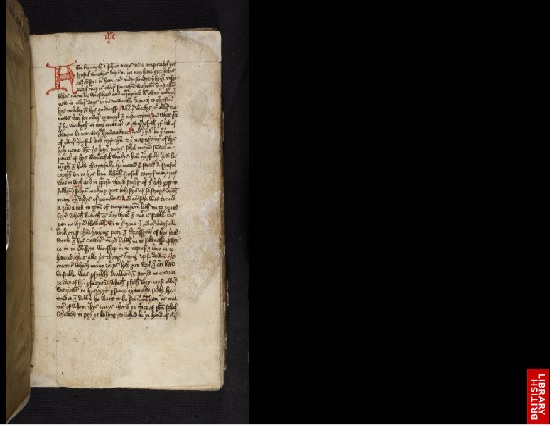Billed as two of the earliest women writers, manuscripts of the works of Julian of Norwich and Margery Kempe are displayed together for the first time in a special exhibition in Euston, London through July.
The Guardian reports
The Book of Margery Kempe, which is dated between 1436 and 1438, is Norfolk woman Kempe’s story of her life, dictated to a scribe, and is widely seen as the first autobiography in English. The mother of 14 children, Kempe became a chaste pilgrim after experiencing religious visions, travelling to Jerusalem and Santiago de Compostela while expressing her devotion to Christ through weeping and loud cries.
The 14th century anchorite Julian of Norwich wrote Revelations of Divine Love herself after experiencing a series of mystical visions in 1373.
Kempe’s Book was lost from the early sixteenth century until it fell out of a cupboard in a country house in the 1930s. The manuscript of Julian displayed next to Kempe’s is not in her own hand, but is a later, seventeenth-century copy. Since Kempe’s Book had already been lost when that copy was made, the two manuscripts have never before been seen together. Both are on loan from the British Library.
“It’s wonderful that the British Library has loaned the unique manuscript of The Book of Margery Kempe to the This is a Voice exhibition – not only did Kempe describe hearing voices and sounds but she also crafted a distinctive voice for herself. It is very touching that the Julian of Norwich manuscript is displayed alongside that of Margery Kempe: the two women – who can also legitimately be called two of the earliest women writers in English – met in Norwich, probably in the year 1413,” said Anthony Bale, professor of medieval studies at Birkbeck, University of London, who recently edited and translated The Book of Margery Kempe for Oxford University Press.
The guidebook to This is a Voice further explains their inclusion:
In the Middle Ages, phenomena such as voice-hearing were often understood as spiritual experiences, moments of communication with divine or demonic beings. Almost 600 years ago, Margery Kempe visited the anchoress Julian of Norwich, to tell her about the ‘grace that God had put into her soul’, including ‘many wonderful revelations’. The encounter lasted several days, confirming Kempe’s belief that her experiences were given by God. As Margery’s words suggest, it was not uncommon, particularly in hagiographies (biographies of saints), to find such experiences ascribed to demonic causes. The phenomenological richness of these very different experiences, described in multisensory terms (including visions, smells and tactile elements), speaks across the centuries in offering constructive and nonpathological ways in which voice-hearing can be understood.
Margery consulted Julian to confirm that her hearings and conversations with God were real, and the anchorite affirmed her understanding of her spiritual experience. The inclusion of the work of the two women in this exhibition “send[s] an incredibly important message … That hearing voices isn’t new, and that it has been interpreted in more positive ways in the past,” said Charles Fernyhough, who helped put the exhibition together.
Read more at the Guardian here.
Featured image: The only known manuscript of the Book of Margery Kempe was digitized by the British Library and can be viewed online

